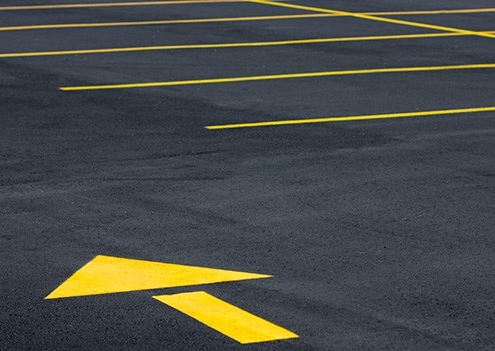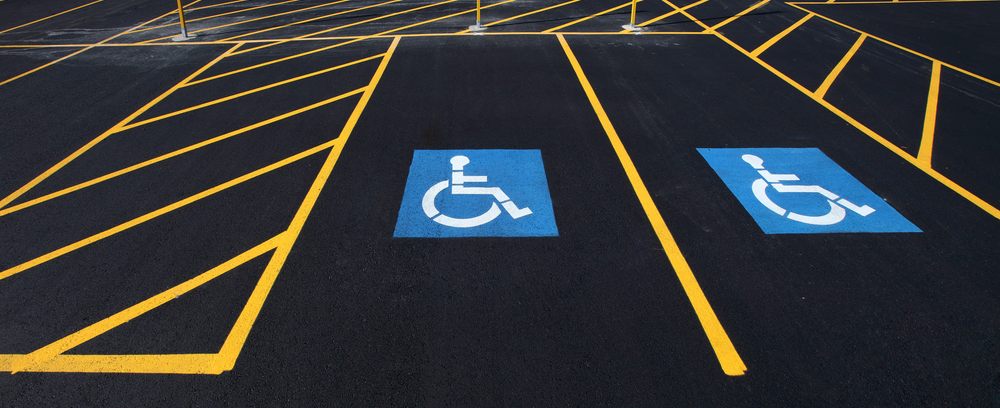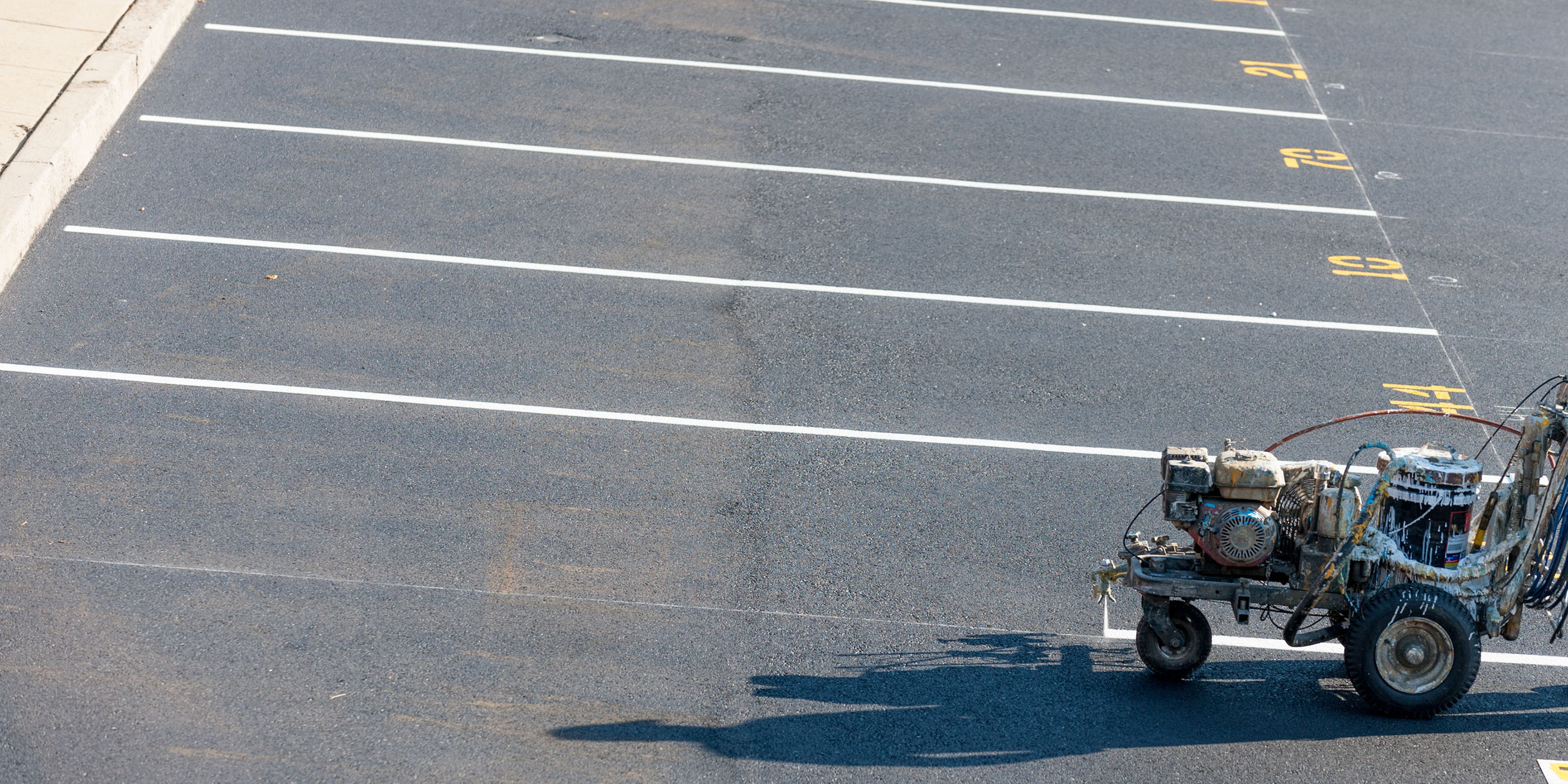Professional Pavement Marking Solutions That Ensure Safety and Conformity for every single Venture
A Comprehensive Guide to the Best Practices in Road Paint for Public Highways
Reliable roadway paint is an important component in making sure public safety and security and ideal traffic flow on freeways. This discussion will discover the finest techniques in this area, including the option of appropriate materials and progressed application strategies. It is necessary to consider not only the instant influence of road markings yet also their long-lasting upkeep and visibility under varying environmental conditions. Comprehending these factors can substantially affect the performance of road markings, yet many are uninformed of the subtleties entailed. As we consider these best methods, the implications for crash reduction and general road functionality will come to be evident.
Importance of Road Paint
Roadway paint plays a crucial role in maintaining traffic safety and performance, with researches suggesting that well-marked roads can decrease crashes by approximately 30%. The clear difference of lanes, pedestrian crossings, and other essential markings serves to lead pedestrians and vehicle drivers, promoting a predictable environment when traveling. This predictability is vital for effective navigation and aids lessen confusion, which can frequently bring about crashes.
Furthermore, road markings are instrumental in sharing important information, such as rate limitations and directional guidance. They boost exposure, specifically in damaging weather or during nighttime driving. The existence of reflective materials in roadway paints additionally enhances presence, permitting chauffeurs to discern critical markings that influence their habits when traveling.

Selecting the Right Materials
Selecting suitable materials for roadway paint is crucial to accomplishing effective and durable markings. The selection of materials straight influences the presence, longevity, and safety of roadway markings. Usual choices consist of water-based paints, solvent-based paints, and thermoplastic products, each with distinct buildings and applications.
Water-based paints are eco-friendly, quick-drying, and ideal for most climate condition, making them optimal for metropolitan setups. They might call for even more regular maintenance due to wear and tear. Solvent-based paints, while offering exceptional attachment and sturdiness, can pose environmental and health worries as a result of volatile organic compounds (VOCs)
Polycarbonate products are progressively preferred as a result of their resilience and long-lasting performance. These materials are warmed before application, permitting a solid bond with the sidewalk. Their reflective homes improve exposure, particularly during the night.
When picking materials, factors such as traffic volume, environment conditions, and the specific sort of road should be thought about. Conducting thorough research and consulting with producers can help guarantee that the chosen products meet neighborhood policies and criteria, ultimately adding to more secure roadways and enhanced vehicle driver understanding.
Efficient Application Methods
Effective application techniques play an essential role in click over here making certain that road markings accomplish ideal performance and longevity. The approach of application substantially affects the attachment, presence, and resilience of the markings. High-pressure airless splashing is frequently chosen for its efficiency and capacity to create smooth, even lines. This strategy minimizes overspray and ensures that the paint is used consistently, which is essential for keeping roadway safety and security.
Prior to application, it is important to prepare the surface area appropriately. This includes cleansing the road of particles, oil, and moisture to improve adhesion. Furthermore, temperature and moisture should be taken into consideration throughout the application process to accomplish the most effective results.
Utilizing the ideal equipment is also essential. Line stripers equipped with flexible sizes enable specific markings that adhere to governing requirements. It is important to calibrate the equipment regularly to guarantee consistency in paint density.
Timing and Ecological Elements
Appropriate timing and consideration of ecological aspects are crucial for the successful application of road markings. The performance of roadway paint mainly relies on wind, temperature level, and humidity conditions at the time of application. Preferably, temperature levels must be between 50 ° F and 85 ° F(10 ° C to 29 ° C) for ideal adhesion and curing. When temperature levels are as well low, paint may not treat appropriately, leading to premature wear and decreased exposure.
Moisture levels likewise play an essential function; high moisture can hinder drying out times, while excessively completely dry conditions may cause quick dissipation of solvents, affecting the paint's efficiency. Wind can present pollutants and particles, potentially endangering the quality of the markings. It is recommended to pick calm days for application.

In addition, taking into consideration seasonal variations is essential. Roadway painting throughout damp periods may lead to washouts, while extreme warm can cause paint to sore. Arranging painting tasks during beneficial weather problems can substantially enhance the long life and effectiveness of road markings. By meticulously reviewing these elements, firms can make sure that roadway markings are used effectively and preserve their exposure and toughness with time.
Maintenance and Durability Methods

One reliable technique is to apply an organized repainting program based on website traffic volume and ecological elements - Road painting near me. Higher traffic areas might call for more frequent upkeep to counteract the erosive results of vehicles and weather. In addition, using durable materials, such as polycarbonate and epoxy paints, can significantly prolong the life-span of roadway markings
Cleaning roadway surface areas to remove debris and impurities is an additional vital element of upkeep. This guarantees ideal attachment of brand-new paint and enhances the overall efficiency of the markings. In addition, employing sophisticated innovations, such as computerized monitoring systems, can streamline the monitoring process and enhance upkeep timetables.
Incorporating these techniques will not only enhance the visibility and security of road markings but also decrease long-term costs connected with regular repainting and repair services. (Parking lot line painting)
Conclusion
View Line painting Abbotsford in a full screen map
The option of suitable products, integrated with efficient application techniques and consideration of ecological elements, contributes to the longevity and visibility of roadway markings. Normal maintenance and examinations better prolong the life expectancy of these markings, ultimately minimizing crashes and enhancing total road use.
The presence of reflective materials in roadway paints he has a good point further boosts visibility, enabling drivers to discern crucial markings that influence their habits on the roadway.
Picking ideal materials for roadway paint is important to accomplishing effective and sturdy markings.While the initial application of road markings is critical, ongoing upkeep strategies are similarly important to guarantee their long life and presence. Additionally, the use of resilient products, such as polycarbonate and epoxy paints, can substantially expand the lifespan of road markings.
The selection of suitable materials, integrated with efficient application techniques and consideration of environmental elements, contributes to the toughness and presence of roadway markings.